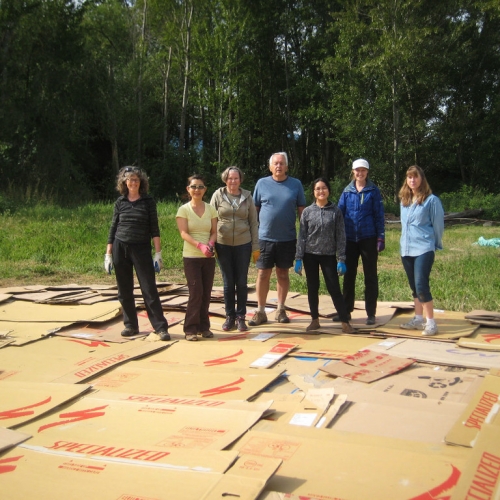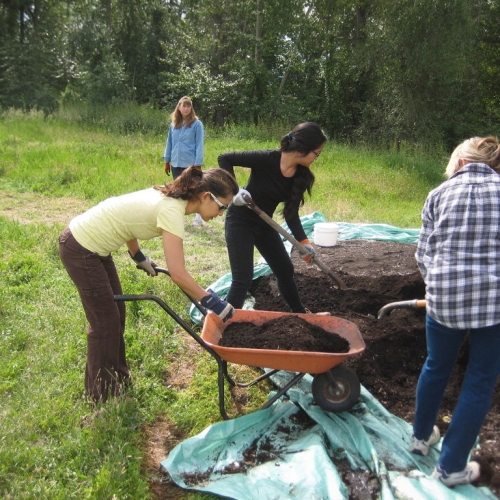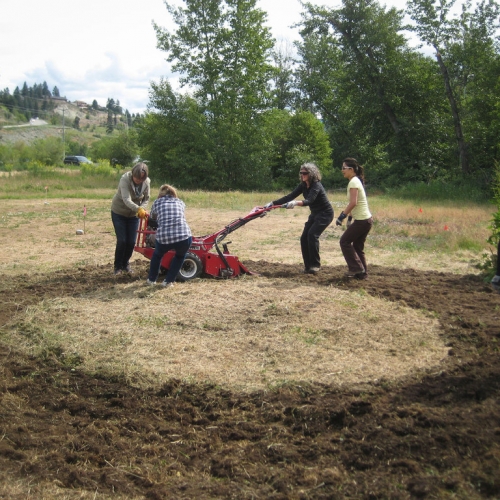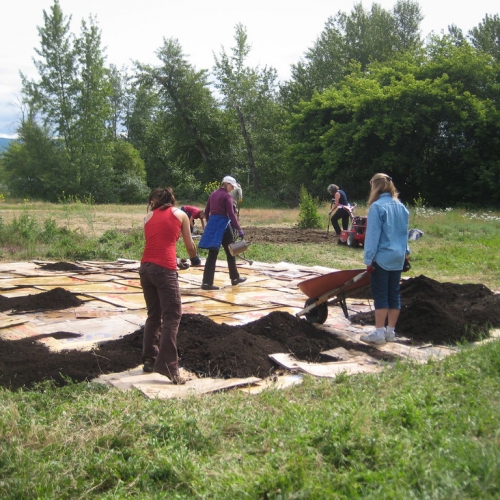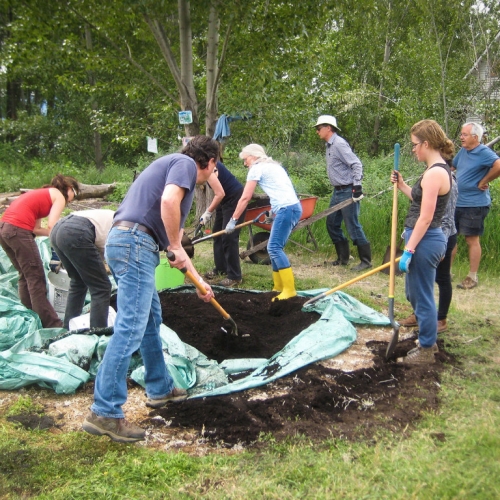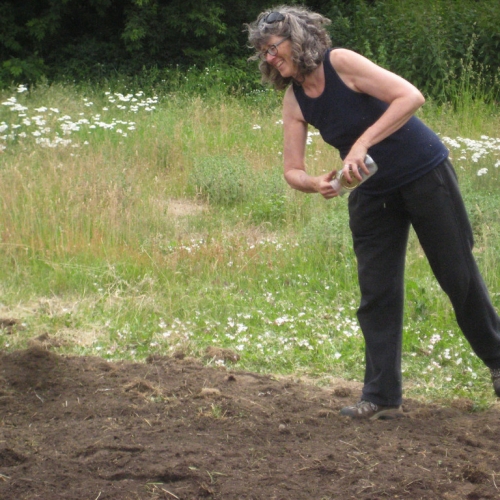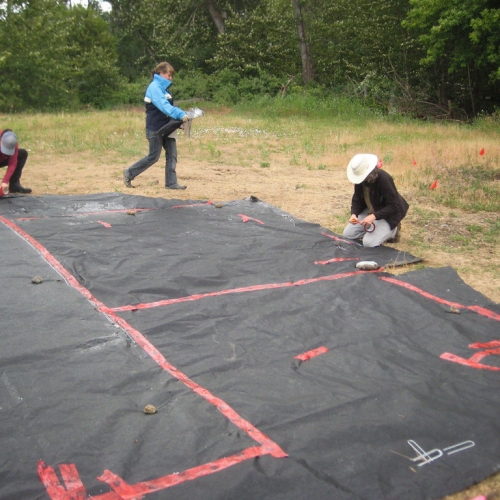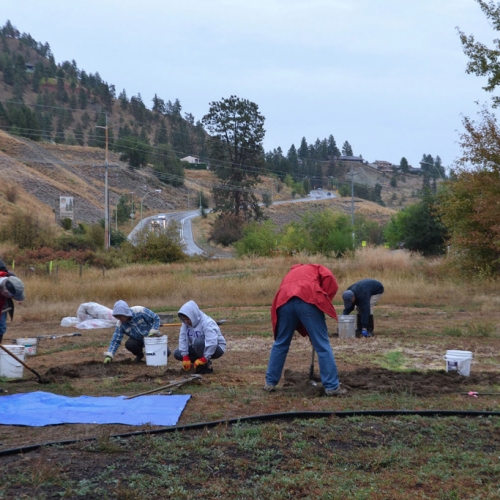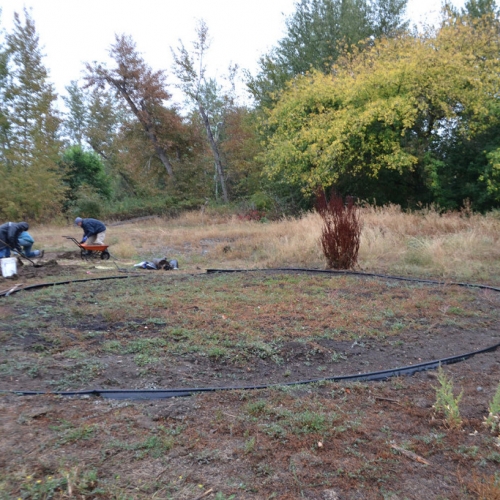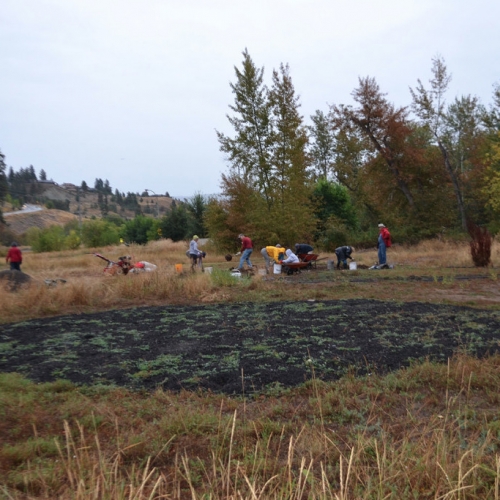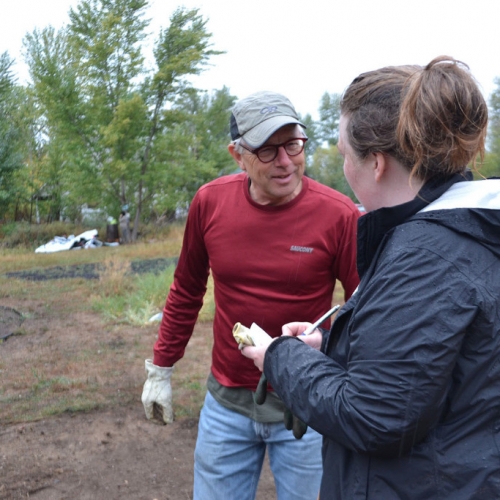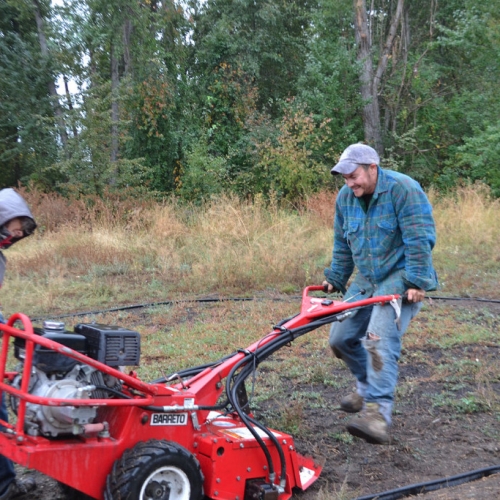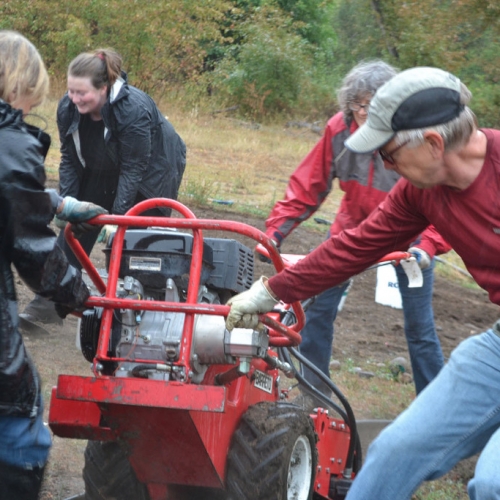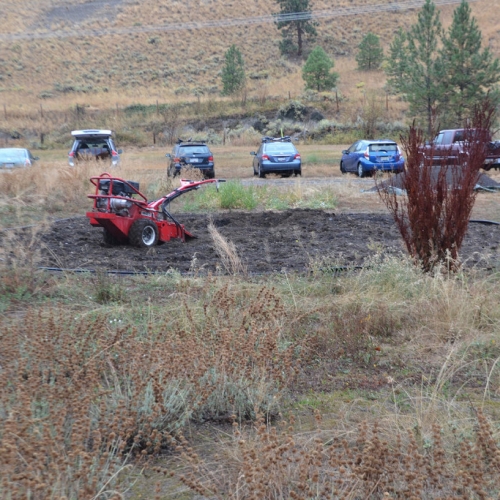In the spring of 2016, a small team of enthusiastic Kelowna gardeners, engineers, permaculturists, landscapers, ecologists, plant specialists, and artists gathered to begin thinking about how we will create Kelowna’s Pollinator Pasture. We agreed to collaborate, co-generate knowledge, and achieve collective impact for our community through a community-generated curriculum: a multi-step method or model for meadow-building that can be upscaled or downsized for other places in the Southern Interior or elsewhere with similar ecosystem challenges. We would create a curriculum or model method around transforming highly disturbed land into pollinator meadows.
- Create a true sanctuary for bees and other native pollinators (no chemical pesticides, fertilizers, herbicides)
- Make it a rain garden- rely only on rain, not irrigation
- Steward the soil
- Steward the creek and riparian zones
- Enhance the site’s aesthetic appeal
- Find ways to invite people to learn about pollinators
- Find ways to engage or not alienate homeless people on creekside
- Focus on native plants but not be puritanical
- Include art as a method
- Include scientific research
- Repurpose or recycle materials as much as possible
- Honour indigenous knowledge and history
- Honour volunteers, children and participants
- Ensure core group of knowledge-sharers are compensated for time and expertise where appropriate
- Everyone’s knowledge and contribution is acknowledged and appreciated
Over the next two years, our plan is create a “curriculum” or series of courses that could be taught to or given to groups wanting to transform land to pollinator- supporting meadows and pastures.
The team and key volunteers: Maureen and Lloyd Lisle, Tanis Gieselman, Elana Westers, Gwen Steele, Wayne Fleming, Loretta Muir, Haruko Kagami, Denise Ketler, Evan Rafuse, Pat Lavender, Lori Mairs.
April 2016
Waldorf school children helped us install bumble bee boxes on site and helped us harvest nettles to make nettle tea for compost fertilizer. Dr. Elizabeth Elle gave a Citizen Science Bee ID workshop and several citizen scientists agreed to come regularly to the site to assess bee species and numbers.
May 2016
On Sunday May 1, several volunteers created two “nursery sites” with cardboard (given to us by local businesses), mulch (donated by the Kelowna Landfill site), and soil. The largest of these nursery sites was planted on Friday, May 6th by school children who had grown milkweed for us and with several gardening volunteers.
The team met and decided to create four test sites on the pasture to see which methods work best for managing the disturbed land and which method would make the pasture most suitable for planting. Haruko Kagami mapped out four 25’ diameter circles, using bumble bee homes as our conceptual pattern, Nancy and Megan Hunger GPSed and marked these out on the site, and Denise Ketler weed whacked the circles.
On Saturday May 28, a group of volunteers developed the first two circles, one sheet mulched with cardboard and mulch and one tilled with a rototiller donated by Winn Rentals. The next day, another group of volunteers created a black plastic covered circle and, because we were rained out, Nancy and her students created the fourth clear plastic circle later that week. Before we laid the plastic we soaked the soil with water and nettle compost tea.

